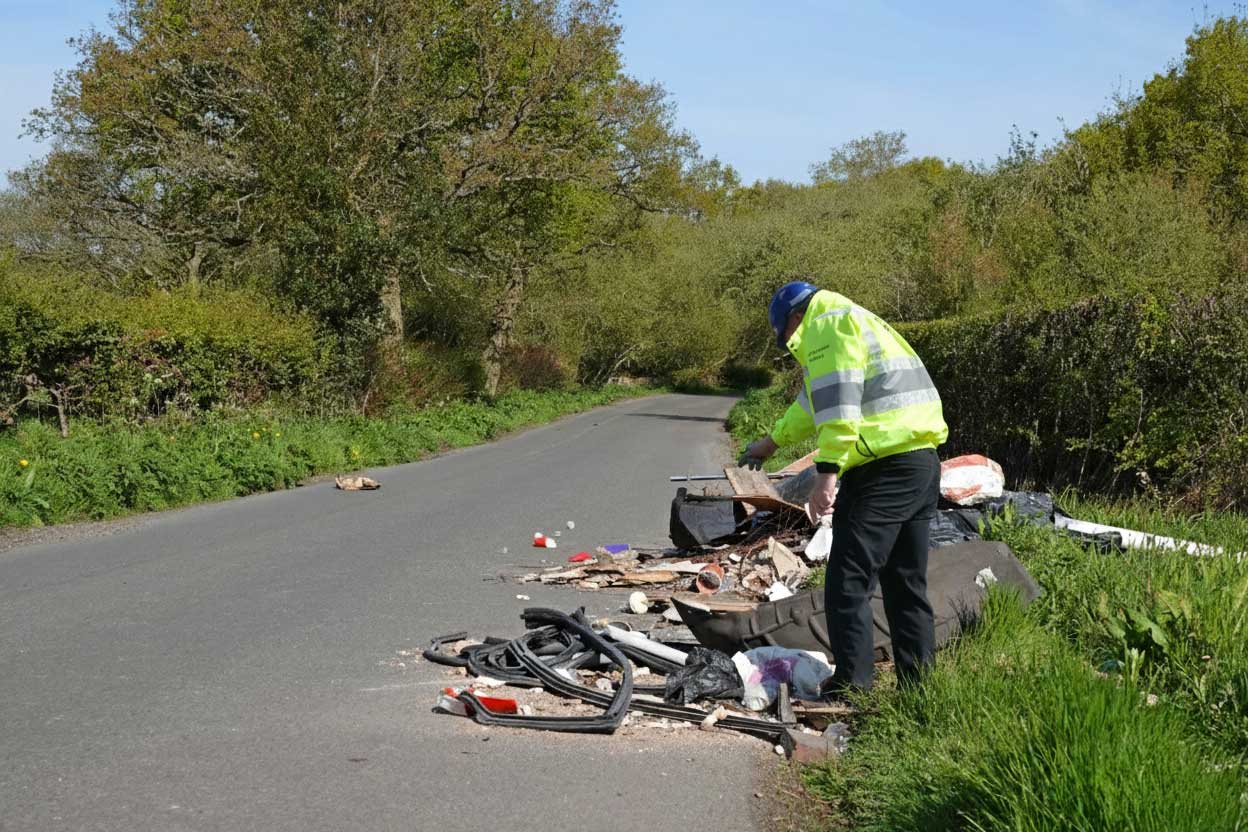EA closed 143 illegal waste sites in 2024-25 amid enforcement criticism
The regulator exceeded its target to close 143 high-risk illegal waste sites in 2024-25, whilst continuing to address parliamentary criticism of its enforcement response.
 The Environment Agency (EA) closed 143 high-risk illegal waste sites in 2024-25, exceeding its target of 90, according to its annual report published on 3 November.
The Environment Agency (EA) closed 143 high-risk illegal waste sites in 2024-25, exceeding its target of 90, according to its annual report published on 3 November.
The regulator's performance comes as it continues to face criticism over its waste crime enforcement, following a House of Lords committee report in October that described the EAs response to serious and organised waste crime as demonstrably ‘inadequate’ and called for an independent review.
The EA's annual report, covering the year to 31 March 2025, states that the regulator has "taken robust action on waste offending and non-compliance this year" and worked with partners on the closure of Walley's Quarry.
Ministerial direction at Hoad's Wood
The report confirms that the agency continues to comply with a ministerial direction received on 22 May 2024 relating to the clearance of the illegal waste site at Hoad's Wood, Kent.
The former Secretary of State for Environment, Food and Rural Affairs, Steve Barclay requiring the EA to immediately clear the waste from the site and provide fortnightly updates on progress.
The House of Lords Environment and Climate Change Committee highlighted Hoad's Wood in its October report as an example of enforcement failures, noting that 30,000 tonnes of waste was illegally dumped in a Site of Special Scientific Interest between 2020 and 2023, and that the Environment Agency did not obtain a restriction order until January 2024.
The taxpayer-funded clean-up is expected to cost up to £15 million, almost equivalent to the agency's entire annual budget for waste crime, according to the Lords committee.
EA response to criticism
Philip Duffy, Chief Executive of the Environment Agency, stated in the annual report: "We have taken robust action on waste offending and non-compliance this year, exceeding our target to close illegal waste sites, working with partners on the closure of Walley's Quarry, and responding to a Ministerial Direction at Hoad's Wood".
The EA's annual report states that waste crime and enforcement work is funded primarily through environment and business grant-in-aid from Defra.
The House of Lords committee heard evidence that the Environment Agency's baseline budget to tackle waste crime remained at £10 million from April 2018, though Defra stated that it has now increased to £15.6 million for 2024-25.
The committee noted that the current £15.6 million enforcement budget represents just 1.6 per cent of the estimated £1 billion annual cost of waste crime to the economy.
In the three years to March 2025, the Environment Agency received over 24,000 reports of waste crime but opened only 320 criminal investigations. During this period, 156 prosecutions were brought, alongside other enforcement actions including 1,037 advice and guidance letters and 685 warning letters.
Data published in May 2025 showed 16,773 suspected waste crime reports across England over 2023, with the West Midlands, Yorkshire and East Anglia recording the highest concentrations.
Government response
The Environment Agency stated in response to the House of Lords report: "Waste crime is toxic and causes serious harm to people, places, the environment, and the economy. We recognise the recommendations of the report and are committed to doing more".
A Defra spokesperson said: "This Government is taking action to clean up Britain and tackle waste gangs. Under our Plan for Change, we are tightening the net on gangs exploiting our waste system by helping councils to crush fly-tippers' vans, funding more Environment Agency enforcement officers and imposing tougher sentences for those who transport waste illegally".
The government must respond to the House of Lords committee's recommendations by 9 December 2025.
Defra confirmed that mandatory digital waste tracking will become available for all permitted and licensed sites receiving waste in April 2026 and mandatory from October 2026 in the first phase, with expansion to other operators planned for April 2027. The system is intended to create an auditable trail of waste movements, making it harder for criminals to operate undetected and enabling enforcement agencies to identify illegal activity more quickly.






